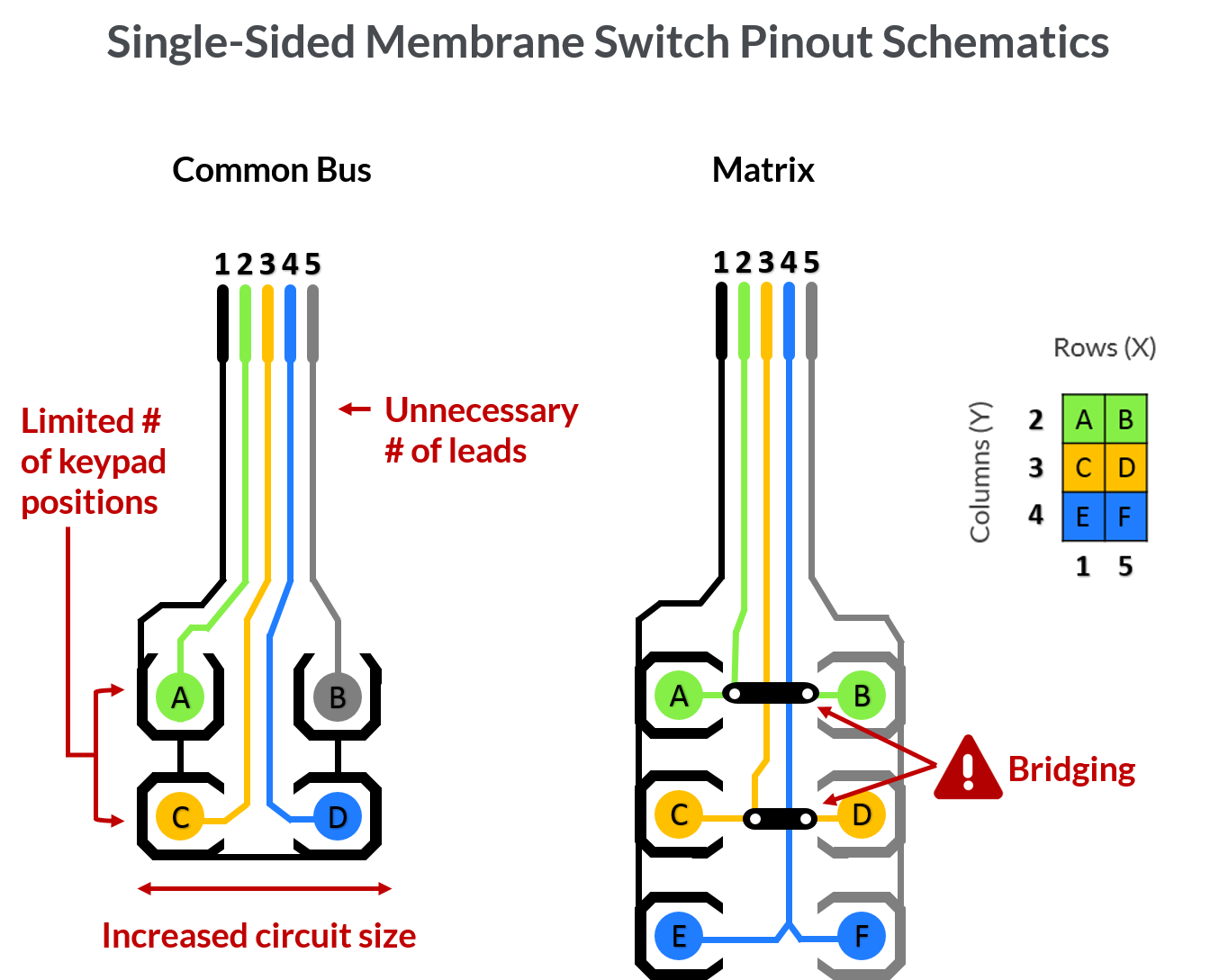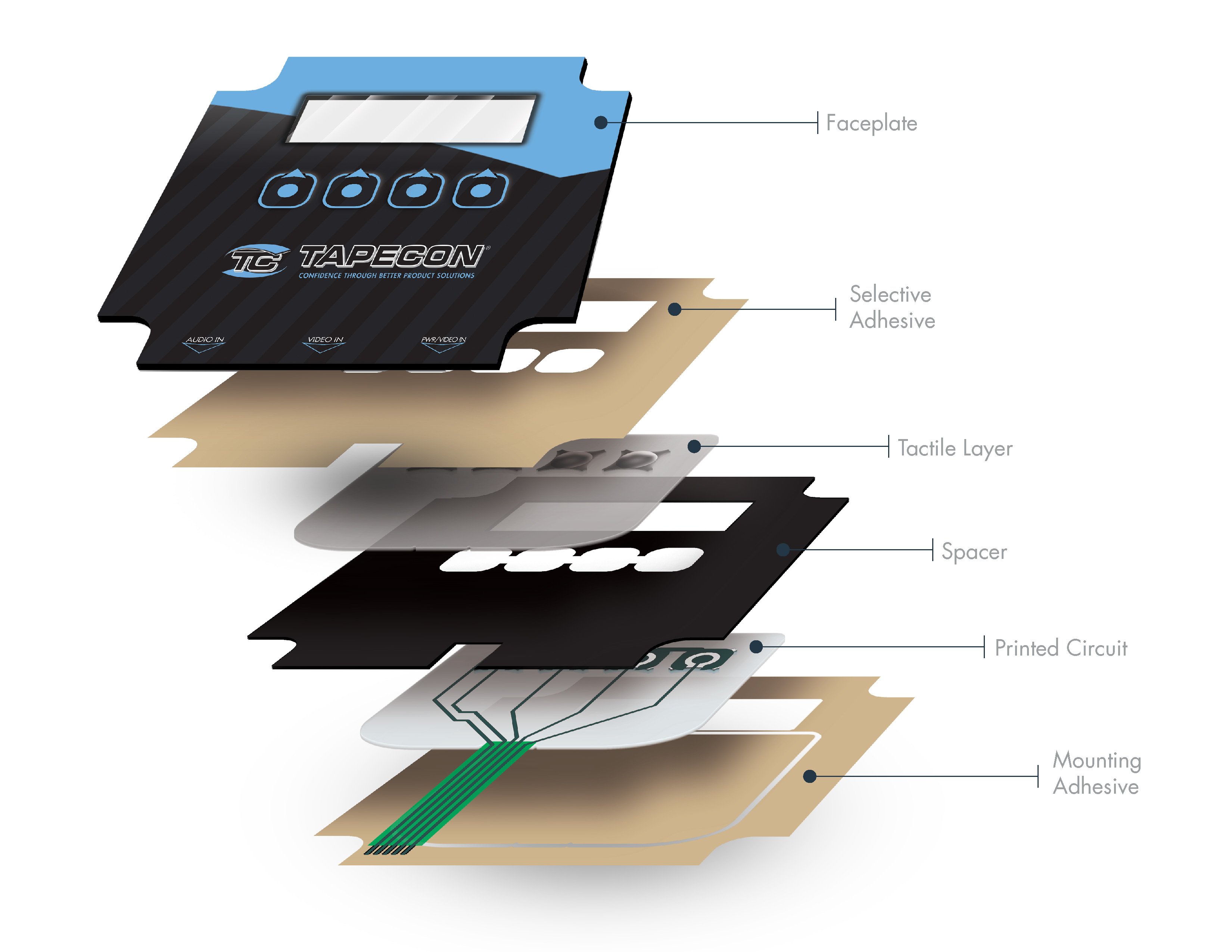Leading Advantages of Incorporating a Membrane Switch Into Your Digital Devices
Leading Advantages of Incorporating a Membrane Switch Into Your Digital Devices
Blog Article
Exactly How Membrane Layer Changes Contribute to the Longevity of Electronic Control Panels
Membrane switches play a vital function in enhancing the longevity of electronic control panels, mainly with their multi-layered building which provides reliable protection against environmental variables such as moisture and dirt. The lack of moving parts dramatically lowers the probability of mechanical failures, making membrane layer changes ideal for requiring applications.
Meaning of Membrane Switches

Membrane switches are made to be thin and light-weight, making them ideal for applications where area is limited. They can be made in different forms, sizes, and colors, using adaptability in design that meets aesthetic and practical needs. Furthermore, membrane layer switches can incorporate different technologies, such as responsive comments and LED indicators, boosting user experience.
Due to their building, membrane switches are typically resistant to dirt, dampness, and basic wear, adding to their durability in requiring atmospheres. Their smooth layout not just assists in very easy cleaning yet additionally decreases the risk of mechanical failure, making them a preferred option for manufacturers seeking trustworthy user interfaces in their electronic control panels.
Security Against Ecological Variables
The layout of membrane layer changes inherently provides a level of protection versus different environmental factors, which is vital for keeping performance in difficult problems - Membrane Switch. These switches are typically created with layers of flexible materials that shield inner elements from moisture, dirt, and pollutants. By enveloping the wiring, membrane switches over lessen the risk of brief circuits and rust, which can significantly impair efficiency
Furthermore, making use of robust adhesives and sealants throughout manufacturing improves their resistance to ecological difficulties. Membrane layer buttons can sustain exposure to chemicals and solvents, making them ideal for markets such as food handling and medical care, where hygiene and cleanliness are paramount. Their seamless surface area layout additionally prevents the buildup of dust and germs, promoting much easier cleaning and maintenance.
Temperature level changes are an additional environmental worry, and membrane switches are crafted to work effectively throughout a wide variety of temperature levels (Membrane Switch). This flexibility makes certain that control panels stay functional in numerous settings, from industrial environments to customer electronic devices
Effect On Customer Interaction
Customer communication with electronic control panels is substantially influenced by the design and performance of membrane layer switches. These buttons offer a tactile interface that improves the total customer experience, enabling instinctive navigating and control. Their responsive nature guarantees that customers obtain immediate feedback upon activation, which is important for jobs calling for accuracy and efficiency.
Additionally, the smooth surface area of membrane layer switches over promotes very easy cleansing and upkeep, advertising customer self-confidence in the reliability of the user interface. This tidiness is especially important in settings where health is extremely important, such as clinical or food handling setups. In addition, the portable and light-weight style of membrane layer changes adds to the visual allure of control board, motivating individual interaction with a contemporary and smooth look.
Additionally, the integration of visual components, such as published symbols and backlighting, assists individuals rapidly identify features, decreasing the discovering curve related to brand-new tools. Because of this, users can run tools better, resulting in raised performance and complete satisfaction. In summary, membrane layer buttons play a critical role in improving individual interaction by incorporating functionality, visual appeals, and ease of use, ultimately resulting in boosted operational effectiveness.
Design Adaptability and Customization
Design adaptability and customization are vital aspects of membrane layer switches, making it possible for makers to tailor digital control board to details applications and user requirements. This versatility permits the integration of different style aspects, such as shades, graphics, and structures, which can improve the great site aesthetic appeal and user engagement of the control panel.
Membrane layer switches can be customized in shapes and size, suiting a vast array of devices and applications, from industrial machinery to consumer electronic devices. This convenience ensures that makers can develop intuitive user interfaces that straighten with customer assumptions and functional requirements. Additionally, the capacity to incorporate special features such as backlighting or tactile feedback further boosts functionality, permitting a much more interactive experience.
Additionally, the manufacturing process for membrane switches sustains the quick prototyping of styles, enabling manufacturers to repeat and fine-tune their ideas swiftly. This capability not only accelerates the growth timeline however likewise ensures that the end product satisfies certain practical and visual requirements.

Cost-Effectiveness and Long Life
Cost-effectiveness and long life are considerable advantages of membrane layer buttons, making them an eye-catching alternative check my reference for suppliers and end-users alike. These switches are typically less costly to create than standard mechanical switches, mainly due to their streamlined production processes and the reduced number of components required. This price benefit prolongs not only to preliminary production but additionally to long-term operational expenditures, as membrane layer buttons often call for much less upkeep and have a lower failing price.
Moreover, the durability of membrane switches over adds to their total value. Constructed from sturdy products, they are resistant to ecological variables such as moisture, dust, and chemicals, which can bring about early wear in various other button types. The lack of moving components minimizes mechanical failing, permitting membrane changes to preserve performance over extended durations.
This resilience is especially useful in applications requiring consistent performance under requiring conditions, such as clinical devices and industrial devices. Eventually, the mix of cost-effectiveness and durability makes membrane layer changes a financially feasible selection for suppliers, providing dependable options that hold up against the test of time while enhancing monetary considerations.
Final Thought
Finally, membrane layer buttons dramatically boost the longevity of digital control board via their robust building and safety features. By efficiently protecting wiring from ecological threats and minimizing the risk Related Site of mechanical failing, these buttons make certain regular efficiency popular applications. The seamless style promotes hygiene and convenience of upkeep, while personalization choices allow tailored options for various demands. On the whole, membrane switches over stand for a reputable and economical choice for improving the long life and performance of electronic control systems.
Report this page